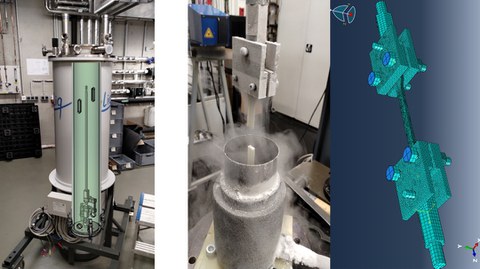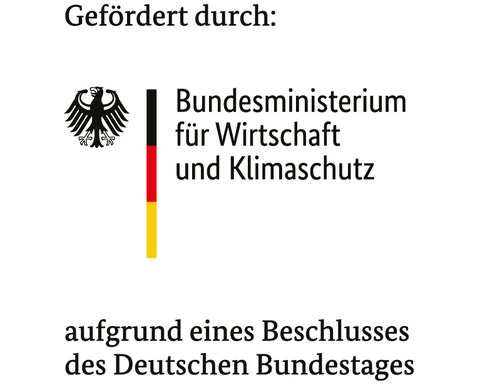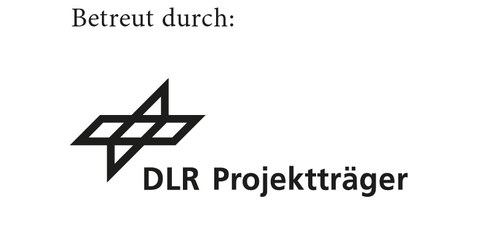HyTank
Test- und simulationsbasierte Analyse von Klebverbindungen für kryogene Anwendungen und Nachhaltigkeitsbetrachtungen zum Fügeprozess eines CFK-LH2-Tanks für die kommerzielle Luftfahrt

Projektlogo.
Um langfristig am Markt erfolgreich sein zu können, muss die deutsche Luftfahrtindustrie auf die steigende Nachfrage nach CO2-emissionsfreiem Fliegen reagieren. Kryogener Wasserstoff als Kraftstoff in Kombination mit einem turbinen- oder brennstoffzellenbetriebenen Triebwerk stellt dafür eine vielversprechende Lösung dar. Neben den Forschungen zu den neuen Antriebssystemen muss auch intensiv an Tanksystemen für flüssigen Wasserstoff geforscht werden, da die massenoptimierte Speicherung ein wesentliches Schlüsselelement zur Umsetzung des emissionsfreien Fliegens darstellt.
Hauptziel des Verbundvorhabens HYTANK ist es, einen wesentlichen Beitrag für die Entwicklung von Tanks aus kohlenstofffaserverstärkten Kunststoffen (CFK) zur kryogenen Wasserstoffspeicherung zur Realisierung emissionsfreier Passagierflugzeuge zu leisten. CFK bietet immenses Leichtbaupotential im Vergleich zu verfügbaren metallischen Tanks, was für Flugzeuge mit höheren Reichweiten von besonderer Bedeutung ist. Im Verbund HYTANK sollen daher ressourceneffiziente Bearbeitungs- und Montageverfahren für Flüssigwasserstofftanks aus CFK entwickelt sowie fertigungstechnisch umgesetzt und getestet werden.
Die TU Dresden fokussiert sich dabei auf die experimentelle Aufklärung und mathematische Beschreibung des Einflusses von flüssigem Wasserstoff auf das Verhalten der Fügepartner in Laminatdickenrichtung, die Schädigung der Klebstoffe und der resultierenden Klebverbindungen. Hierbei steht die Entwicklung angepasster Methoden für Prüfungen in kryogener Umgebung im Vordergrund. Darüber hinaus wird der Aushärtungsprozess der Klebstoffe hinsichtlich seiner Reaktionskinetik analysiert, um eine möglichst energieeffiziente Prozessführung aufzuzeigen. Der Fügeprozess wird im Konsortium mittels LCA bewertet.

Kryostat für Prüfung in LH2 (links), Beispiel: Zugversuch in LN2 mit digitalem Modell (rechts).
01.04.2023–30.06.2026
 © TUD/ILK
© TUD/ILK
Professur für Systemleichtbau und Mischbauweisen
NameProf. Dr.-Ing. habil. Maik Gude
Eine verschlüsselte E-Mail über das SecureMail-Portal versenden (nur für TUD-externe Personen).
Institut für Leichtbau und Kunststofftechnik
Besucheradresse:
DÜR, Etage 0, Raum 71 Holbeinstr. 3
01307 Dresden
Deutschland
- Dr. Jörn Jaschinski (Prüfmethoden und Materialmodelle|Thermoplastverfahren)
Publikationen Jörn Jaschinski | TU Dresden
Zurück zum Projektverzeichnis
Zurück zum Jahresforschungsbericht 2023


